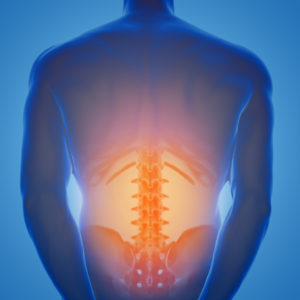“Nearly 92 million U.S. adults, or about 38 percent of the population, took a legitimately prescribed opioid like OxyContin or Percocet in 2015, according to results from the National Survey on Drug Use and Health.” CBS News – August 2017

Our previous blog outlined the serious problems that have resulted from the over-prescription of opioids and the general lack of understanding among conventional doctors about effective techniques for resolving common causes of pain. At Dorfman Kinesiology, we specialize in time tested protocols for resolving pain without opioids or invasive surgeries.
Chronic lower back pain is one of the most prevalent reasons for seeking medical care. Studies indicate that 40% of Americans who do seek medical treatment for their lower back pain end up with a prescription for opioids. Meanwhile, a 2015 report by the British Medical Journal states that there is little evidence that opioids are effective for chronic low back pain. Furthermore, they report indicates that opioid use does not expedite return to work or result in improved functioning.
So, if not opioids, what is the best way to address lower back pain? To answer that question, I have to start with the assessment process as an accurate assessment is vital to successful treatment.
First off, it is important to point out that “lower back” is a general term. It can involve various parts of the anatomy and physiology. In order to successfully resolve lower back issues, the exact location of pain and discomfort must be first identified. To get it right we always ask the patient to point to where it hurts. Potential problem areas include bones of the spine and pelvic area; spinal discs; muscles in the lumbar area, hips and legs; an organ such as the kidney/adrenals; or any combination of the above.
People with pain in one or more of those areas will present with, what they think of, as lower back pain. Those are the places they will touch.

The pain has to have a location and although it can change, following it is one of the keys to successful resolution.
If the discomfort is in the hip, for example, we need to address the hip, not just the lumbar area, which is traditionally thought of as the lower back and which may not actually be involved. If a person with a hip problem were to get an X-Ray or MRI for what they consider to be lower back pain– the lumbar would likely be the only place examined. In addition, in the AMA model, lower back problems are not diagnosed with muscular involvement. It’s only the hardware that they can photograph. Qualitative analysis of the software is not being done.
In working toward a better solution, conventional doctors need to reevaluate their near-complete reliance on expensive machinery to make a diagnosis. While these tools are useful in diagnosing a bulging/herniated disc or issues with the lumbar vertebrae, they cannot assess muscle or organ involvement. There is no substitute for human touch when evaluating soft tissue.
Movement is another tool that we use to fine-tune our assessments. We evaluate range of motion and level of discomfort with movement. We want to know where movement is impeded and by how much.
We also consider when a person feels the pain and how much it hurts: the frequency and intensity. For example, do you notice it early in the morning, or later in the day? This specificity will lead to the correct treatment. The only way we know that the treatment is correct, is because it works.
As you can see, all lower back pain is not created equal. At Dorfman Kinesiology we design your treatment to meet your specific needs. We offer massage therapy, Yoga therapy, exercise therapy, acupuncture, and more. All of these modalities have been proven over time to be effective in resolving lower back pain.

Despite the dim state of “pain management” treatment within the modern medical system, I am optimistic to learn that a growing number of physicians are recommending exercise and massage for chronic lower back pain. NPR reports that over 30% of doctors recommend exercise or physical therapy, and a little over 16% recommend massage therapy.
Doctors Peter Atilla, Kimberly Corrigan-Dankworth, Scott Mercer and Michael Skyhar are all forward-thinking practitioners in the San Diego area who regularly refer patients to Dorfman Kinesiology for help with lower back pain and other structural issues. It has been a joy to work with these amazing doctors, but it is the patients who have gained the most from our collaboration.
Stay tuned for my next blog in which I will share a few practices that can be applied across the board to alleviate lower back pain. If you are considering taking opioid medication for your lower back pain, and just can’t wait, please contact us today. We can help you stay opioid-free and set you on the path to feeling better forever.
Disclaimer: This information is not considered to be a replacement for medical care. Please consult your physician to learn if these suggestions are right for you.

Another outstanding relevant information piece that helps me be free of pain by employing Brian and his associates to resolve my bodies issues. Thanks, Brian.